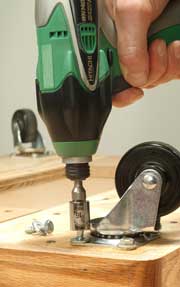
Please explain the difference between the mechanisms in an impact driver vs. a hammer drill (such as a Hilti) used for drilling into concrete, etc. – Carolyn Miller
Chris Marshall: Although impact drivers and hammer drills seem to defy the laws of physics, they actually function in two different ways. The action produced by an impact driver is created by three internal components: a strong compression spring, a weight—called an impact mass—and a T-shaped anvil. When you’re initially driving a fastener and the resistance is low, the spring holds the impact mass against the anvil so they rotate together. At this point, the tool motor is doing all the work. Then, as the resistance of the fastener increases, the impact mass slows down and momentarily slips away from the wings of the hammer. This “lag” allows the motor, which is still operating at a constant speed, to wind the compression spring behind the weight and drive it forward again with great force against the anvil. This all happens in a fraction of a second. Each time the motor winds the spring, the impact mass repeatedly strikes the anvil. The impact action is directed perpendicular to the bit and fastener, but not forward. It’s an incredible mechanical advantage over a drill that simply uses the motor to turn the fastener or bit.
In comparison, a hammer drill doesn’t have the impact mass component and anvil. Its gearing rotates a drill bit or driver just like a normal drill. But, when you set it to hammer mode, the drill’s transmission shifts into a percussive “forward” motion while the chuck spins. A return spring pushes the chuck back to the start position between those forward pulses. That’s what “hammers” a masonry bit into tough materials like concrete.







